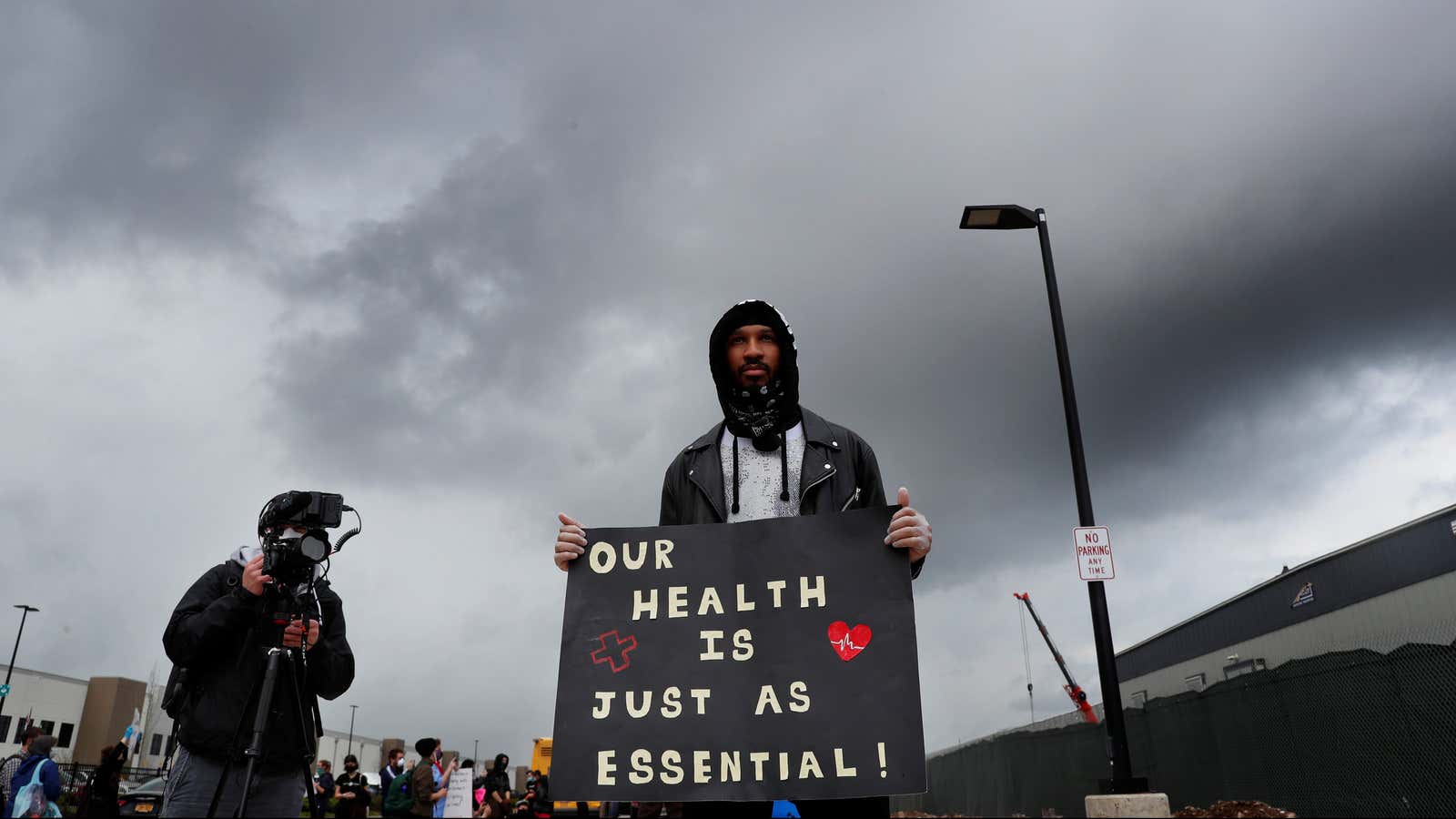An Amazon executive has resigned in protest after the company fired employees who drew attention to unsafe conditions in its warehouses.
Tim Bray, a former vice president and engineer for Amazon Web Services, Amazon’s cloud computing division, wrote in a blog post he “quit in dismay at Amazon firing whistleblowers who were making noise about warehouse employees frightened of Covid-19.” Bray said his last day at Amazon was May 1, and that quitting will cost him over $1 million in lost salary and stock.
Last month, Amazon fired two user experience designers, Emily Cunningham and Maren Costa, who were members of Amazon Employees for Climate Justice and who had recently criticized Amazon’s warehouses as unsafe. Both Cunningham and Costa made offers on Twitter to match donations up to $500 to support Amazon warehouse workers. In late March, Amazon fired warehouse assistant manager Christian Smalls after he organized a walkout from the company’s facility in Staten Island, New York, over lack of safe working conditions.
Bray, who worked at Amazon for more than five years, said he “snapped” after the company started firing activist employees and warehouse workers, who he said were disproportionately women, minorities, or both. He described Amazon’s actions as “chickenshit” and “designed to create a climate of fear.”
“VPs shouldn’t go publicly rogue, so I escalated through the proper channels and by the book,” Bray wrote. “That done, remaining an Amazon VP would have meant, in effect, signing off on actions I despised. So I resigned.”
Amazon declined to comment.
The Covid-19 pandemic has highlighted how many of the global economy’s most essential workers are also its lowest paid and most vulnerable. Amazon warehouse workers are among them: They have kept Amazon’s deliveries moving despite often lacking adequate protective equipment and having to work in crowded spaces where social distancing is impossible.
Amazon raised its minimum hourly wage to $17 from $15 in late March and said US workers would receive double pay for overtime. Amazon said in its latest quarterly results (pdf) that its investment in increased pay will be nearly $700 million through May 16. Even with those raises, an Amazon warehouse worker working a regular 40-hour week would earn barely half of the US median household income. Amazon also said in its latest earnings report that it has procured 100 million face masks for frontline workers and purchased more than 1,000 thermal cameras and 31,000 thermometers to conduct daily temperature checks on employees.
Workers at Amazon and Amazon-owned Whole Foods planned to join other essential workers on International Workers’ Day (May 1) in a strike for better protections and benefits during the pandemic that Smalls helped organize. It’s unclear how many workers ultimately participated. In France, all six of Amazon’s warehouses were closed last month after a French court ruled the company wasn’t doing enough to protect its workers from the coronavirus, and the French government today rejected a request by Amazon to use a partial unemployment scheme for the 10,000 workers at those facilities.
